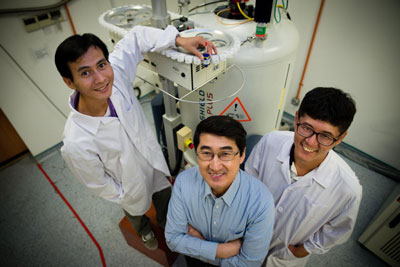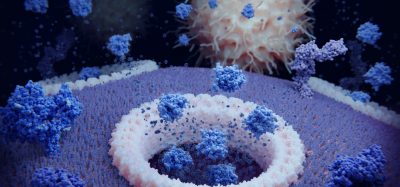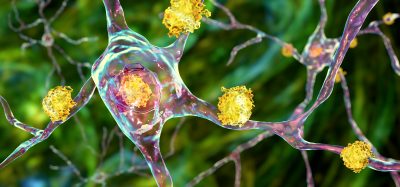Anti-malaria drugs could be a potential treatment for Parkinson’s disease
Posted: 17 July 2015 | Victoria White
Scientists have found that existing anti-malaria drugs, Chloroquine and Amodiaquine, could be a potential treatment for Parkinson’s disease…


NTU Assoc Prof Yoon Ho Sup (centre) with Dr Shin Joon (right) and Mr Nguyen Quoc Toan (left) in front of the NMR spectroscopy machine used in their experiments. CREDIT: NTU Singapore
Scientists from Singapore’s Nanyang Technological University (NTU Singapore) and McLean Hospital and Harvard Medical School in the United States have found that existing anti-malaria drugs could be a potential treatment for Parkinson’s disease.
The team of international scientists had discovered that by activating Nurr1, a class of proteins found in the brain, it protects the brain’s ability to generate dopamine neurons.
Dopamine, commonly known as the chemical in the brain that generates pleasurable feelings, is an important neurotransmitter that affects motor control and movement of muscles in the body. Parkinson’s disease disrupts the production of dopamine neurons and progressively causes the loss of motor control.
In laboratory tests, the scientists found that by activating Nurr1, rats which had Parkinson’s disease appeared to improve in their behaviour and showed no signs of suffering from the disease.
Associate Prof Yoon said the team had screened about 1000 FDA-approved drugs before they found two anti-malaria drugs which worked: Chloroquine and Amodiaquine.
“Our discovery brings hope for the millions of people suffering from Parkinson’s disease, as the drugs that we have found to have worked in the laboratory tests have already been used to treat malaria in patients for decades,” said Yoon, an expert in drug discovery and design.
“Our research also shows that existing drugs can be repurposed to treat other diseases and once several potential drugs are found, we can redesign them to be more effective in combating their targeted diseases while reducing the side effects.”
Nurr1 is known to be a potential drug target to treat Parkinson’s disease
Professor Kwang-Soo Kim, a leading expert in Parkinson’s disease, said the current golden standard of treatment is to replenish the patients’ dopamine levels through medication or by using a surgical method to do deep brain stimulation using electric currents.
“However, these pharmacological and surgical treatments address the patient’s symptoms, such as to improve mobility functions in the early stages of the disease, but the treatments cannot slow down or stop the disease process,” Prof Kim explains.
“Backed by various lines of scientific evidence, Nurr1 is known to be a potential drug target to treat Parkinson’s. Despite great efforts from pharmaceutical companies and academia, no one has managed to find a molecule which can directly bind to it and activate it, except for us.”
Both Chloroquine and Amodiaquine are approved by the US Food and Drug Administration and are used treat malaria infections. Chloroquine was used in the late 1940s to early 1950s, until the malaria parasite grew resistant while Amodiaquine is still being used in Africa today.
The scientists aim to design better drugs for Parkinson’s disease by modifying Chloroquine and Amodiaquine. The team hopes to carry out clinical trials with these modified drugs.
The research is published in PNAS.
Related topics
Drug Discovery, Nuclear Magnetic Resonance (NMR)
Related conditions
Malaria, Parkinson's disease
Related organisations
Harvard Medical School, Nanyang Technological University (NTU)








